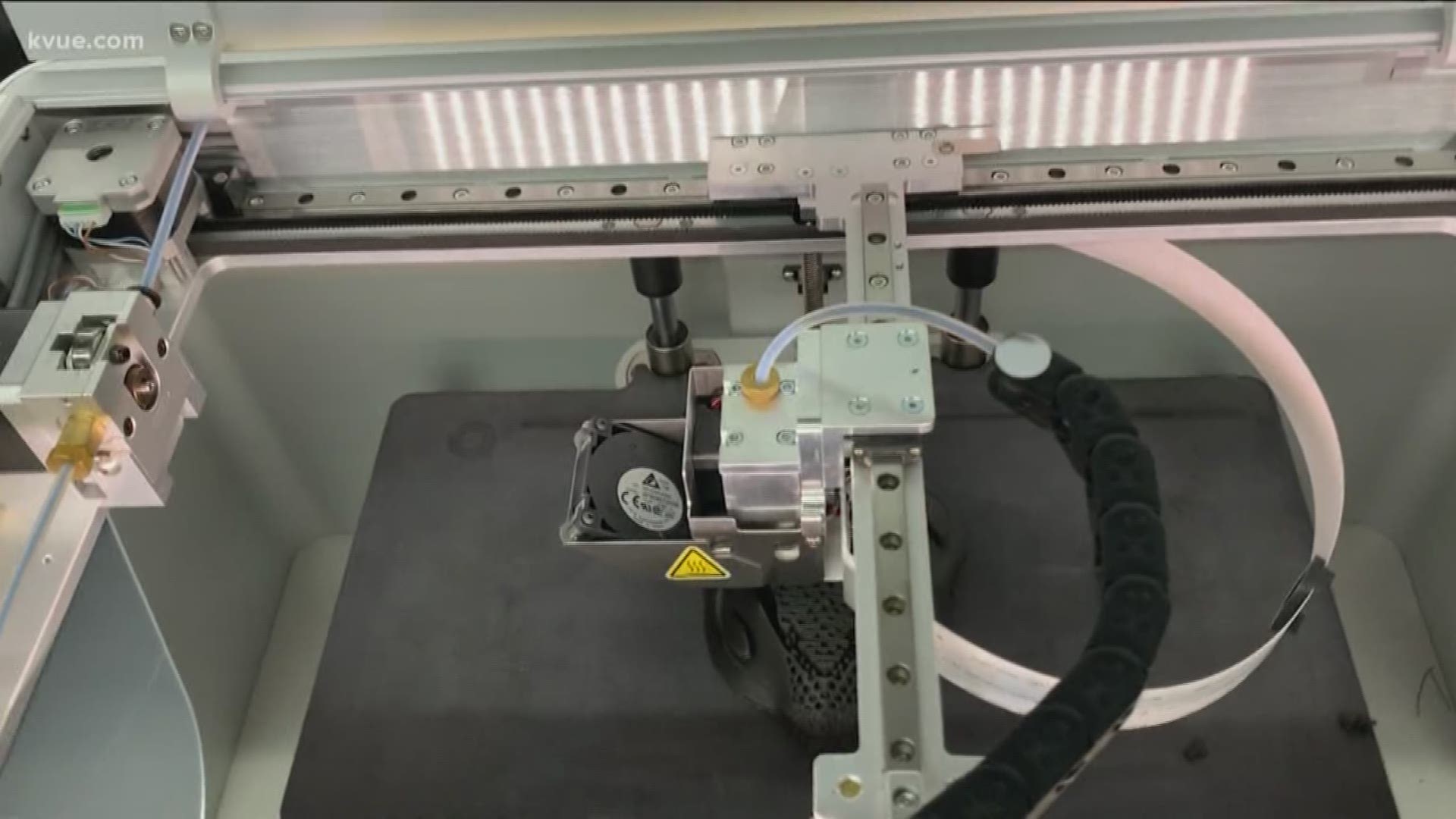AUSTIN, Texas — Researchers at the University of Texas have released a new pandemic model of COVID-19, which shows the positive role social distancing has in mitigating the spread of the coronavirus in Texas.
The report projects significantly higher numbers of cases of infection, hospitalizations, intensive care unit admissions and deaths in 22 Texas communities under scenarios in which social distancing measures are moderate, according to researchers at UT Austin’s College of Natural Sciences.
Region-based graphs can be found in the report regarding how social distancing affects the total number of infections, hospitalizations, ICU beds required to treat patients, how many ventilators would be needed and more, projecting as far as Aug. 17.
RELATED:
Here is a look at the overall burden that UT researchers project COVID-19 will have on Texas given these five scenarios:
- No social distancing
- Closing schools
- Closing schools and 50% reduction of non-household contacts
- Closing schools and 75% reduction of non-household contacts
- Closing schools and 90% reduction of non-household contacts

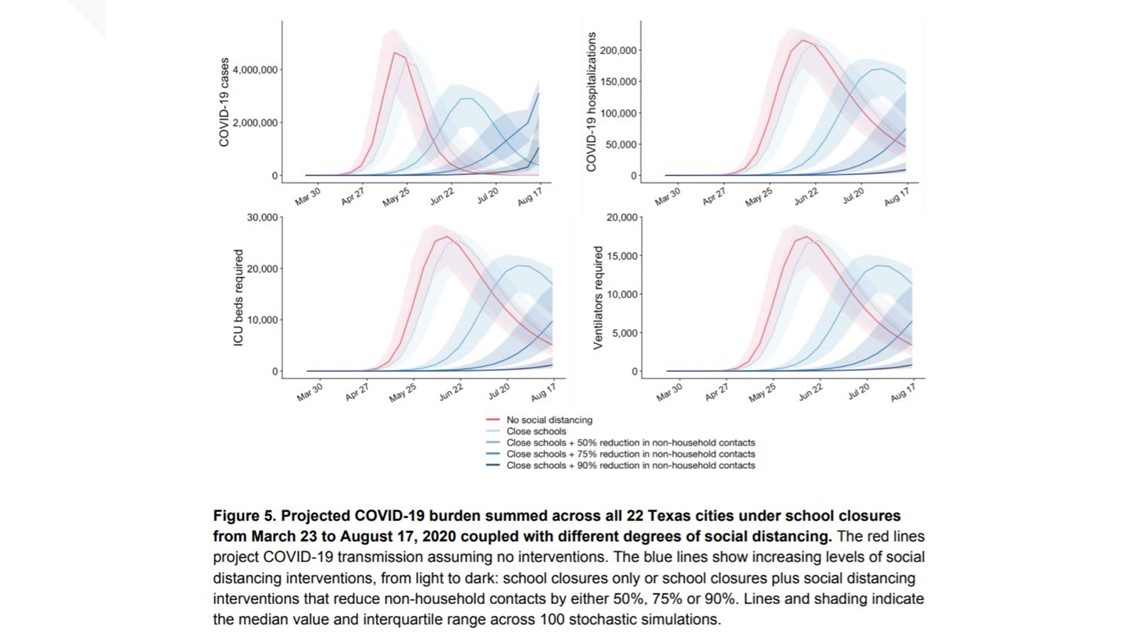
According to the graph, with no social distancing, it peaks at more than 4,000,000 COVID-19 cases statewide before May 25, more than 200,000 hospitalizations before June 22, nearly 30,000 ICU beds required to treat patients before June 22 and more than 15,000 ventilators needed by June 22. Just by closing schools and limiting non-household contact by 50%, the number of projected COVID-19 cases cuts nearly in half to just over 2,000,000, and the other three categories decrease significantly as well. The research team found that reducing daily contacts in the community by 50% – or even 75% – may not be sufficient in some Texas cities to prevent an unmanageable surge in COVID-19 hospitalizations, UT officials said.
The graph showed closing schools and limiting non-household contact by 90% would cut the number of cases, hospitalizations, ICU beds and ventilators required, dramatically. UT officials said the model suggests that reducing daily contacts between people by 90% would be expected to “flatten the curve” through the spring and summer in each of the cities.
RELATED:
“Our projections indicate that COVID-19 may quickly exceed health care capacity across Texas cities and that extensive social distancing measures can both delay and diminish pandemic surges,” the authors wrote.
Here is a look at regional-based projections of the findings under the same five scenarios:
- No social distancing
- Closing schools
- Closing schools and 50% reduction of non-household contacts
- Closing schools and 75% reduction of non-household contacts
- Closing schools and 90% reduction of non-household contacts
COVID-19 CASES PROJECTED BY REGION

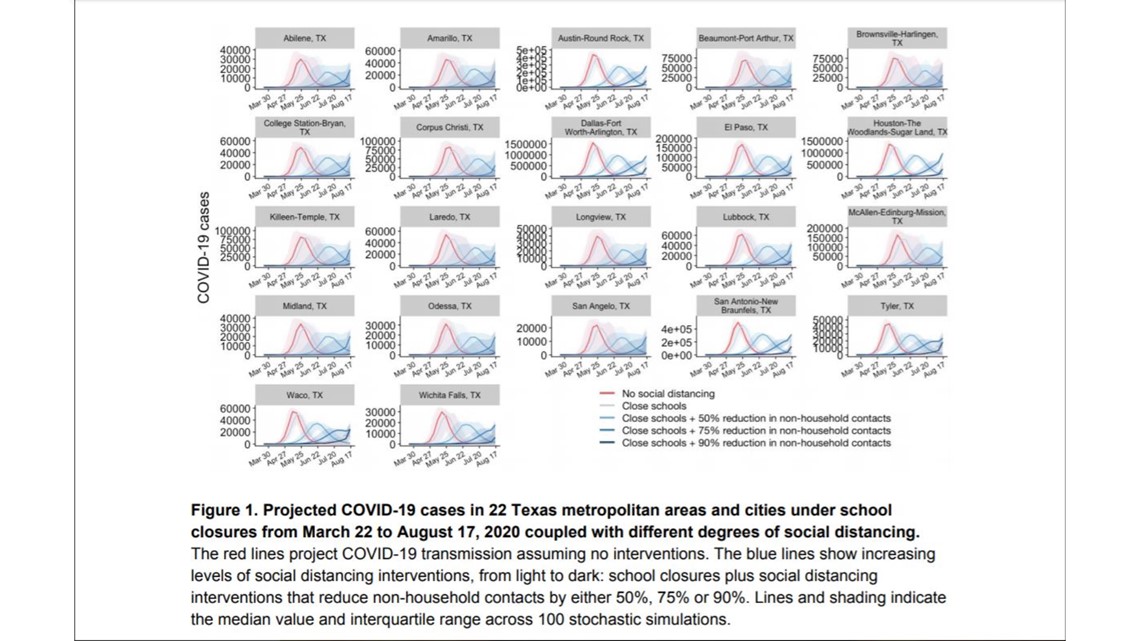
COVID-19 HOSPITALIZATION PROJECTIONS BY REGION

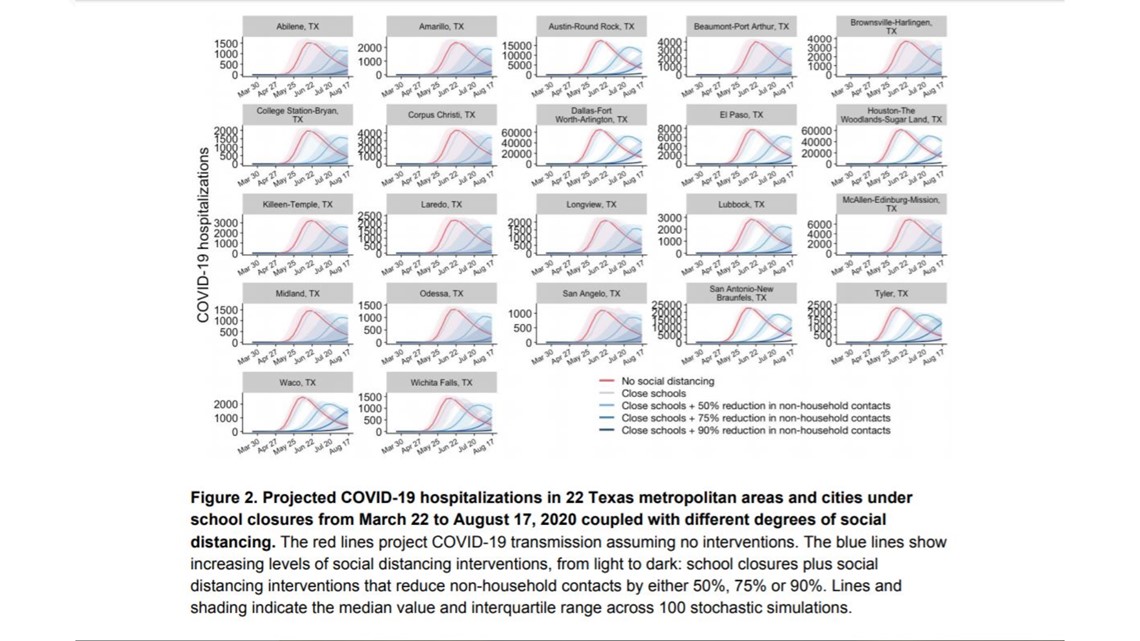
COVID-19 ICU BEDS NEEDED BY REGION

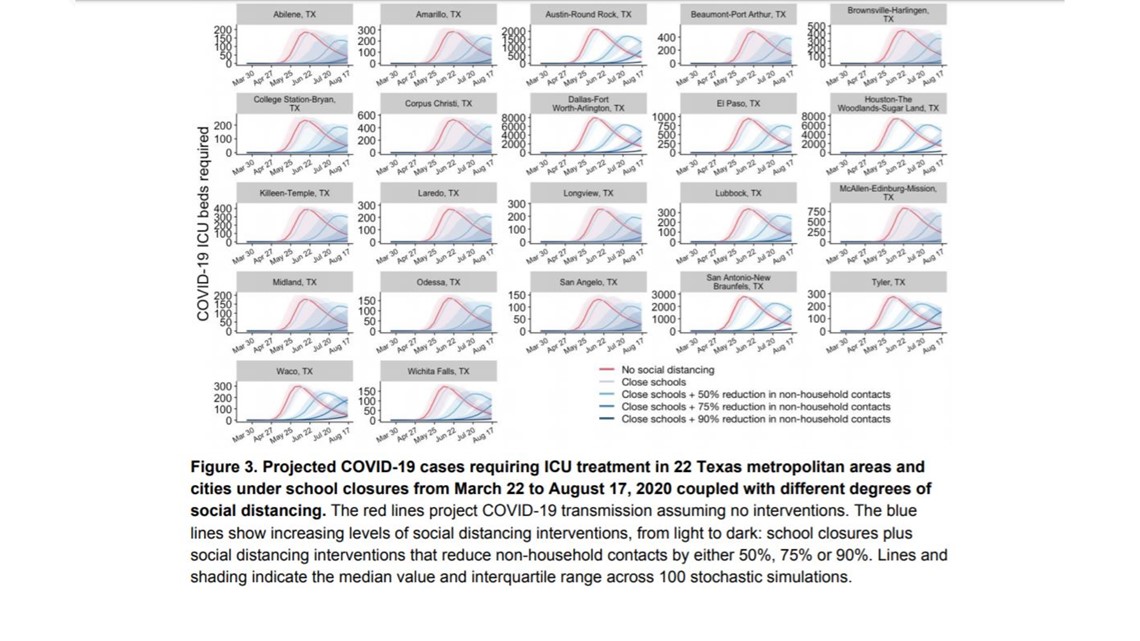
COVID-19 VENTILATOR NEEDS BY REGION

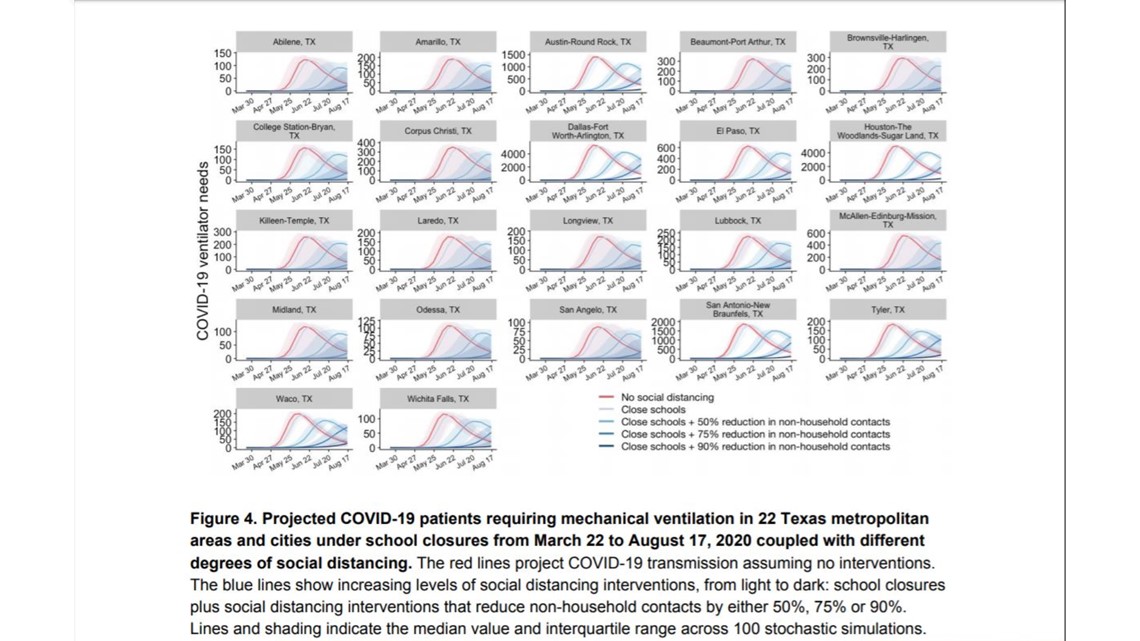
UT officials said the model’s findings are consistent with those of models developed by epidemiologists from around the world. The number of infections was highest under counterfactual scenarios in which no social distancing measures were adopted in any community, according to the researchers.
The research team, led by professor Lauren Ancel Meyers, reassured that the extent of social distancing practiced greatly affected the peak number of infected people, hospitalized patients and deaths in each community.
“The number of in-person interactions people have with one another matters,” Meyers said. “For the Austin-Round Rock metropolitan area, our models project that we have to eliminate well over half of our typical daily contacts to prevent a critical shortage in hospital and ICU capacity in the next 12 weeks.”
For the full University of Texas report, click here.
PEOPLE ARE ALSO READING:

